Disclaimer: This blog post contains affiliate links. If you make a purchase through these links, I may earn a small commission at no additional cost to you. Learn More. Thank you for supporting our garden community.
Tomato Plant Spacing Doesn’t Matter as Much as They Say it Does
You’ve probably seen those perfect little charts showing how far apart to plant your tomatoes. “Space indeterminate varieties 24-36 inches apart.” “Keep rows 3-4 feet apart.” Yeah, yeah, yeah. That’s cute on paper. But let’s be real: if you’ve got a small backyard garden, that kind of tomato plant spacing is a fantasy.
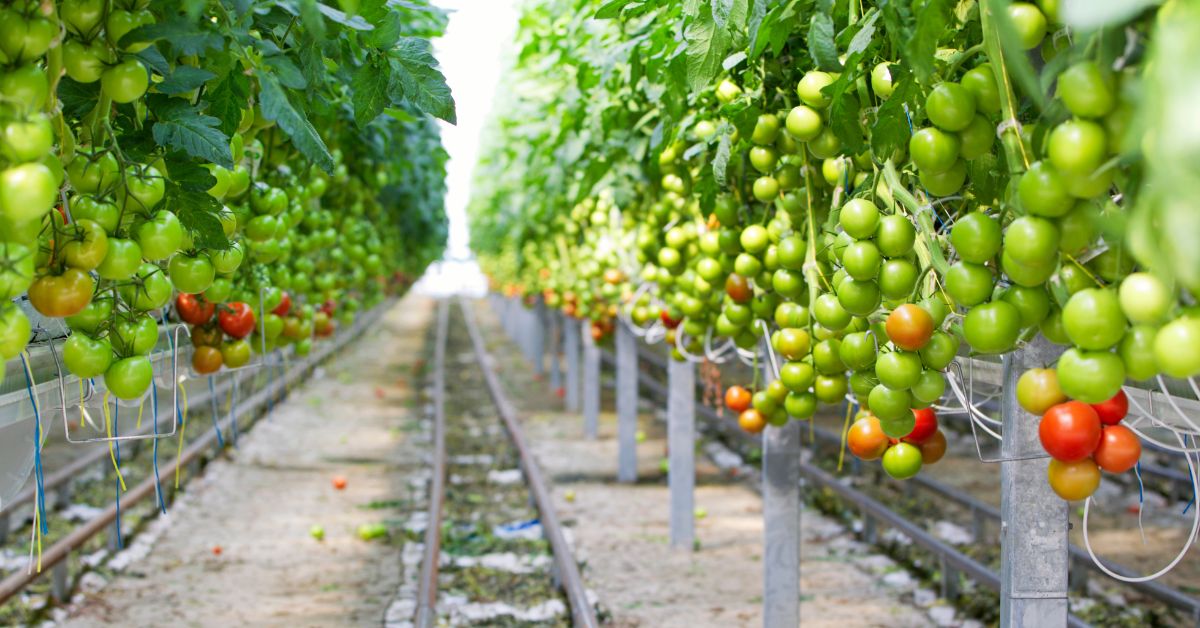
Tomato Plant Spacing Doesn’t Matter
Nobody with a backyard vegetable garden is giving up half their bed just for some imaginary airflow. And you know what? Tomatoes still grow.
That’s just the nature of plants. They grow.
I’ve never seen a plant in the wild afraid about growing too close to something else. Especially the exact same plant.
So let’s cut through the crap and talk about what actually matters when it comes to tomato spacing. Plus, I’ll show you what you can do instead.
I promise, I know backyard vegetable gardening.
Products:
Save 10% on your first Burpee seed order using code BURPEE10
Textbook Advice vs. Real Life
A lot of these spacing requirements come from the back of tomato seed packets. If you’ve never read it, good.
But I’ll tell you about it anyways.
Most of those instructions say to space your tomatoes 24-36 inches apart. What?! Are you crazy?! That’s 2-3 whole feet!
And they say to space rows 3-4 feet apart. Who has that kind of space?
There’s no way I’d have the space for that kind of spacing in my garden. And I know you don’t either. That’s exactly my point.
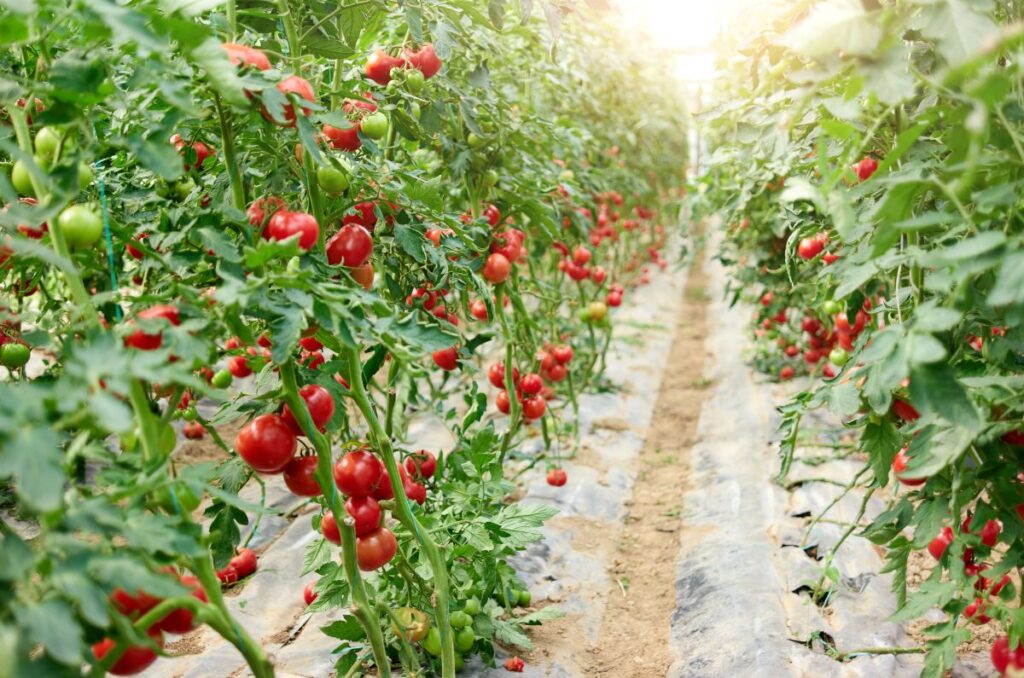
Even though we use these seeds, the instructions are not made for us. They’re based on:
- Ideal conditions. Something we don’t always have in our specific growing zone, let alone our backyard.
- Wide, open spaces. Basically a farm. Most vegetable gardeners don’t have that kind of space. Most of use have a backyard, patio, balcony, or something like that.
- Commercial growing setups. Again, this is industrial agriculture, not home gardening.
- People who apparently have unlimited garden beds and nothing better to do. Anybody who’s lived a day in this world knows that most people can’t do this.
Then the online gardening experts like to parrot this information to their followers. And that’s where the problems start.
Then people actually start following these spacing requirements and they complain about not having enough space. I get it, I used to do that too.
Planting tomatoes 2-3 feet apart was normal for me too, I know.
But I slowly started challenging those “experts.” And guess what: I still get tons of tomatoes.
Does Tomato Plant Spacing Matter at All?
I’ll be fair here.
Yes, tomato plant spacing does matter to a degree. I won’t lie about that. It’s true that the more cramped your tomato plants are, the more you’ll see these issues:
- Fungal diseases: Fungi spread quickly, especially in moist and stagnant conditions. If your plants are really close, fungi will have no issue moving around freely.
- Less airflow: Again, the more crowded they are, the less airflow there’ll be. This increases the risk of diseases, like powdery mildew.
- Difficulty pruning and harvesting: Your plants will be really close, so it’ll be more difficult to get in there to prune and harvest ripe fruits. You might have to do some digging around or you might miss some tomatoes.
But will your tomato plants die if they’re too close? No.
Will they still grow and produce a ton of fruit? Yes.
Will they take over your garden and look like a jungle? Also yes. But that’s kind of the beauty and fun of it. Nobody else will have a productive garden like yours.
What to Do Instead
Here’s what the practical backyard gardeners do to grow a bunch of tomatoes in a small space.
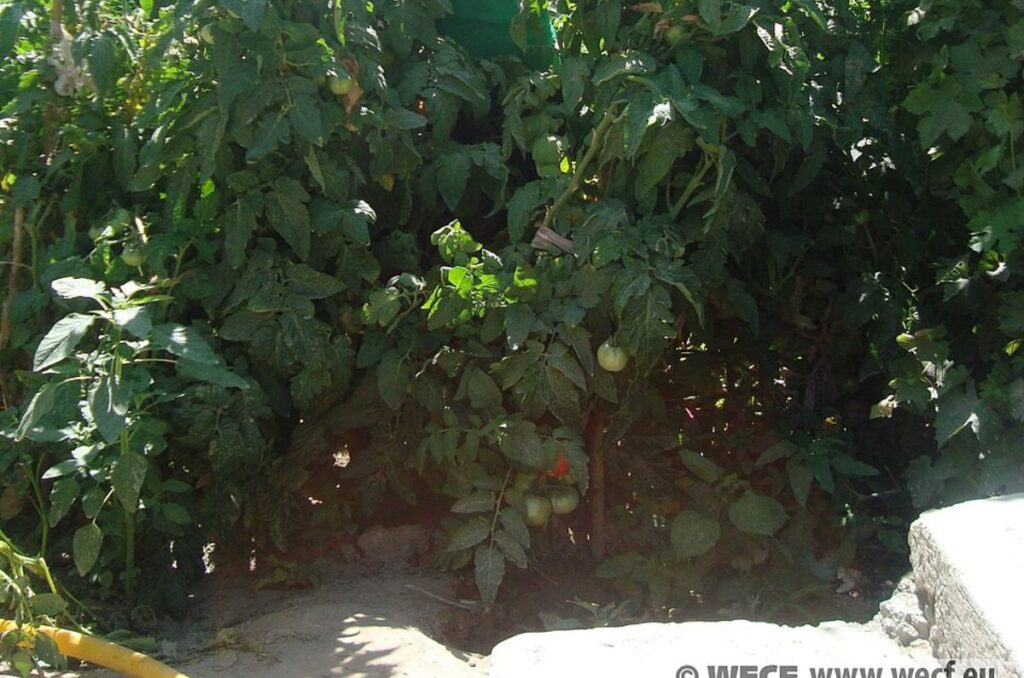
1. Pack them in
Get a bunch of tomato plants and pack them in closely if you have to. Yes, they’ll still grow. They’ll grow like a rainforest, sure, but they’ll grow.
You just have to keep an eye on them for that exact reason. If they get out of control, you have to spot it and take action.
The best thing to do is remove lower leaves and branches close to the floor. This will reduce the chances of pests and diseases getting onto the leaves.
Additionally, look for areas where the leaves are crowding each other, even along the tops of the plants. Removing these leaves will increase airflow and help prevent fungal diseases.

2. Forget about “rows”
Honestly, I never really understood what row spacing was for. It makes no sense to me. If the plants are spaced 2 feet apart regularly, why does there need to be 4 feet between rows?
Wouldn’t it just be 2 feet on all sides? I don’t know. Doesn’t make sense.
If the rows are meant for you to get in there to prune and weed, I guess it kind of makes sense. But we don’t have the space for that either.
So forget the row spacing entirely. That’s there for commercial growers where they need big machinery to come through.
I don’t know about you, but I don’t have any big machinery.
There’s no point of row spacing from my reasoning, so just space your tomatoes the same amount on all sides.
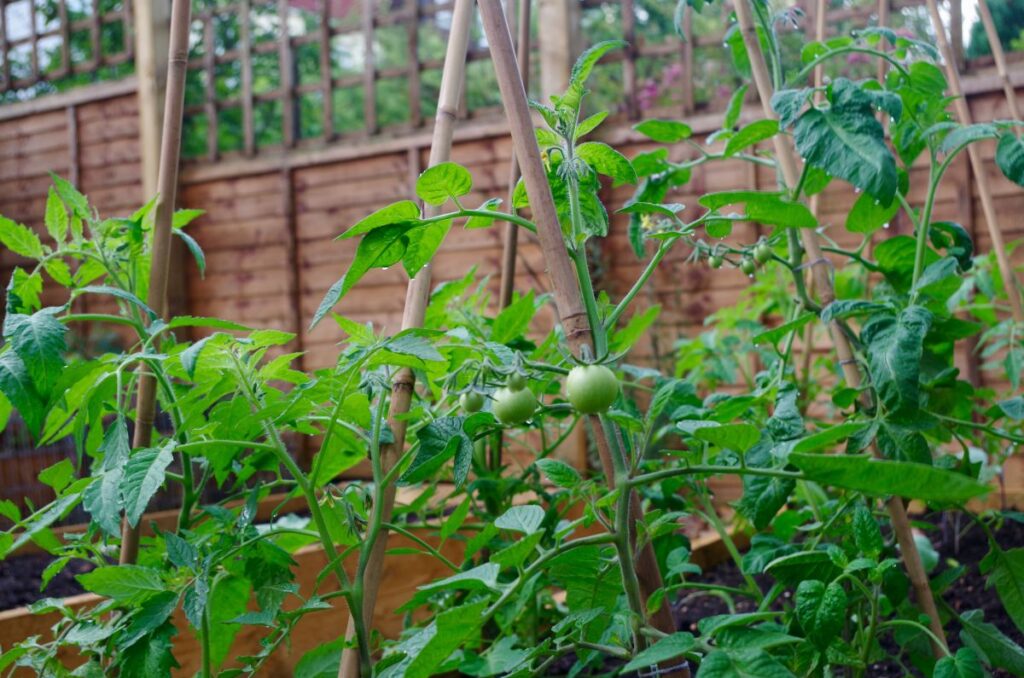
3. Grow vertically
It might sound obvious to a lot of people, but some people just don’t trellis their tomatoes. But this is what will impact your harvest the most.
If they’re sprawled all over the ground, obviously they’re going to get disease and crowd each other out. But if you allow them to grow vertically, all of a sudden you get more airflow and better harvests.
I have a full article on 5 tomato trellis ideas for any garden, but it really doesn’t matter in this case which one you use. Just get them off the ground.
If you like single stakes, good. Maybe you want a Florida weave or A-frame. That’s good too. They just have to be away from each other and away from the ground.
This will allow you to space them tighter, grow more plants, and still get a great harvest.
It’s what I and most other backyard vegetable gardeners do. And it works.
4. Don’t be afraid to experiment
Just try something different and see what happens. Nobody’s watching except you.
Or maybe you’re like me and your grandma comes outside to tell you exactly what you’re doing wrong. But that doesn’t matter.
Try planting your tomatoes closer together this year and see what happens. If you get blight or other issues, fix it for next year.
Is it possible that you’ll waste a growing season? Most probably not. It’s very unlikely that you’ll waste an entire growing season because of your experiment.
Is it possible that you’ll have a slight decrease in success one time? Yea, of course it is. But that shouldn’t stop you from trying.
It’s only natural that things change every growing season.
Just don’t let those garden experts tell you your plants are too close if they’re growing just fine.
How Close Can You Plant Tomatoes?
The honest answer is that I never measure my tomato plant spacing. So you can really plant them as close as you want.
As long as you’re ok with managing the chaos. I know I definitely am.
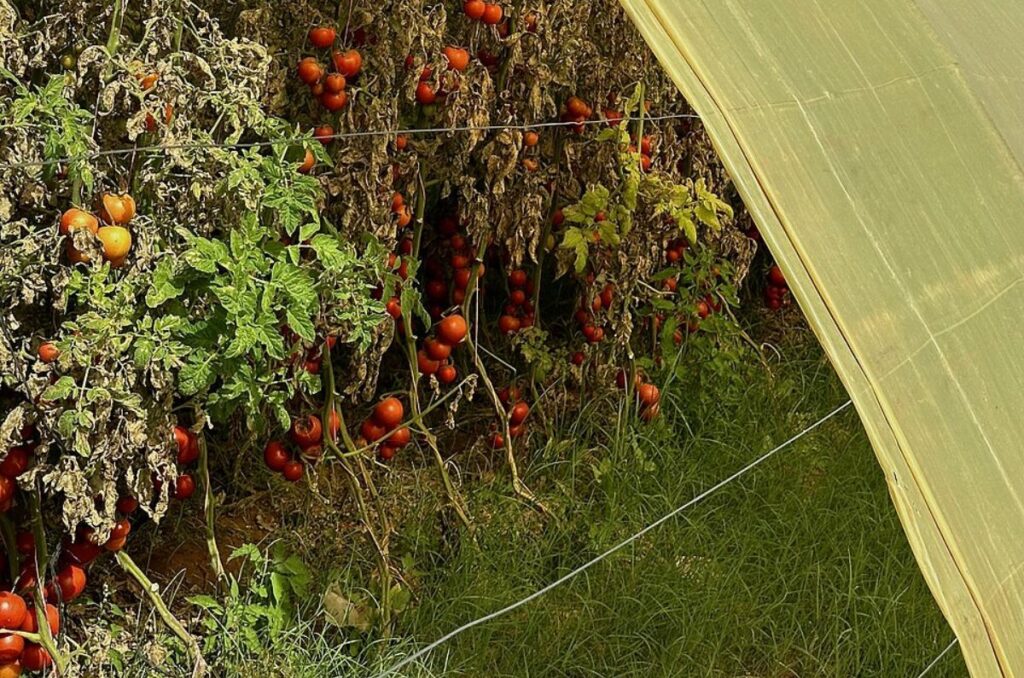
When planting tomatoes, I have this image in my mind of about 1 foot. I try to keep that spacing between all my plants.
If it goes down to 10 inches, who cares? I don’t. That doesn’t bother me now that I know that tomato plant spacing really doesn’t matter.
Maybe you have 2 feet between each plant. Great, they’ll definitely grow. You probably won’t have to do too much pruning.
If you’re like me and everything gets a foot, that’s even better. Now you can fit more plants in the same space, meaning you’ll get more fruit.
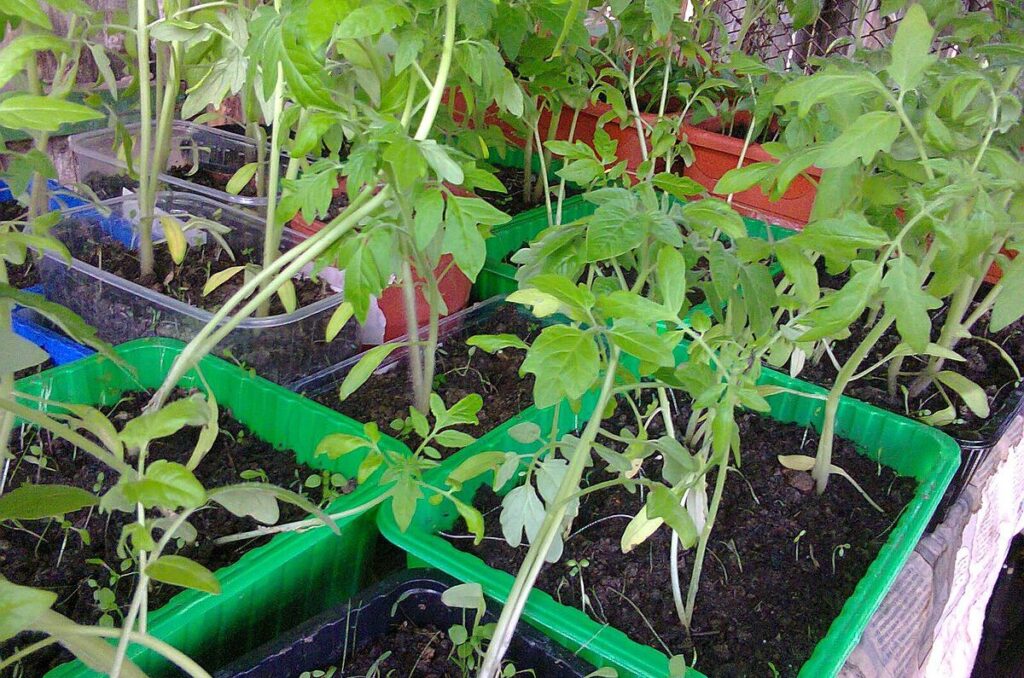
Maybe you’re trying to put 3 tomato plants in a 7 gallon container. I’ve never done that before, but I’m convinced they’ll grow just fine.
Yea, it’ll be tight, you’re right. But that’s where selective pruning comes in.
You should know that all of this might mean more pruning, trellising, tangled vines, and diseases. But if you’re ok with that, then do it.
If your plants are growing, producing fruit, and not collapsing under their own weight, then you’re good. Don’t let the internet or seed packets tell you otherwise.
This is your garden. Grow tomatoes the way gardeners actually grow them.
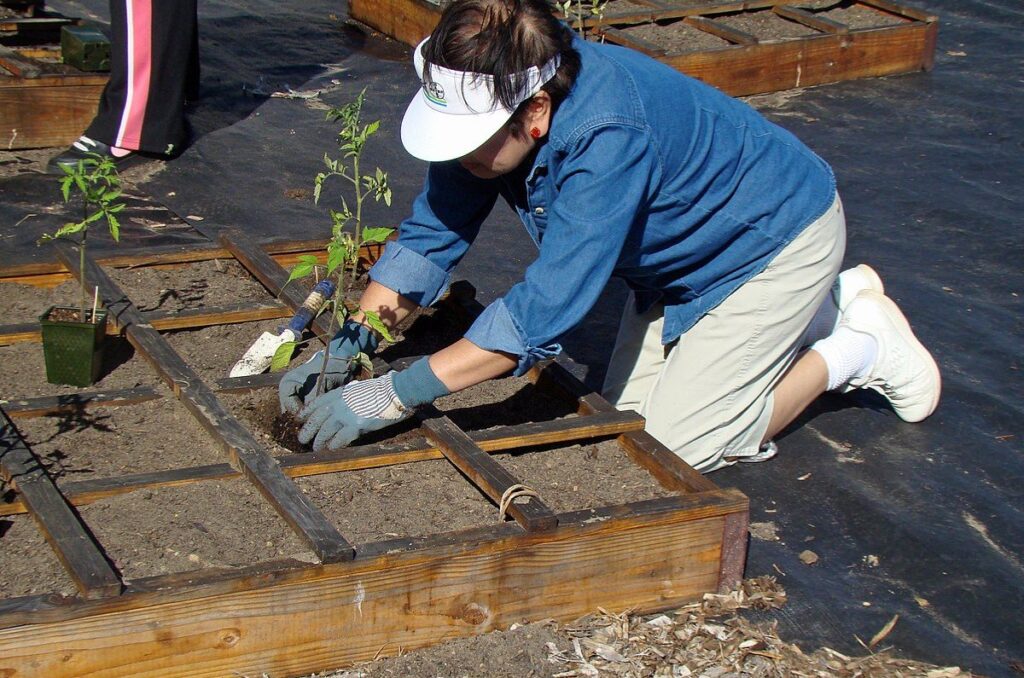
Tomato Plant Spacing With Square Foot Gardening
The idea of square foot gardening is when you divide your garden area into square feet. Lines are made with string or drip irrigation and each square is one square foot.
Each plant has its own number for how many of it can be planted in one square foot.
I don’t know all of them by heart but one example is that tomatoes are planted 1 plant per square foot.
This is one of the things that I agree with in square foot gardening. I think having tomato plants 1 foot apart is ideal for most vegetable gardeners.
I don’t particularly follow square foot gardening methods, but I think they can be valuable in some cases. Contrary to companion planting, it’s just used to increase the amount of vegetables you can grow in your garden.
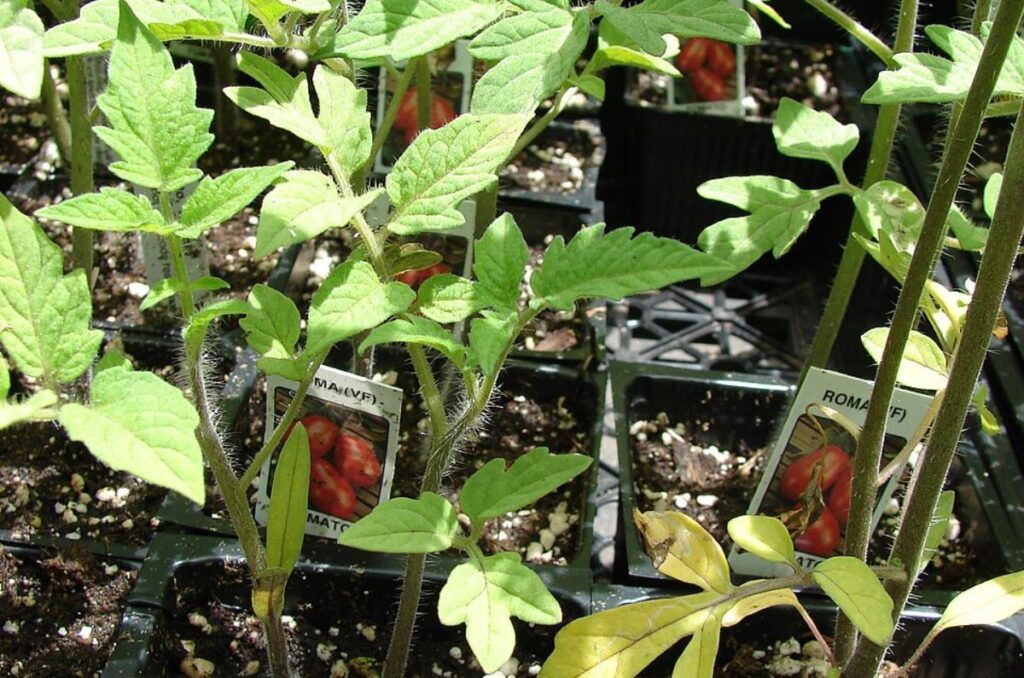
Determinate Tomato Plant Spacing
It doesn’t matter if you’re growing determinate or indeterminate tomatoes, I still think spacing requirements are crap.
So I would follow the same advice for my determinate tomatoes that I’ve said before.
If you have to put 3 in one pot, then do it. I won’t judge.
Just know that determinate tomatoes can grow a little bit bushier. Oftentimes, their leaves are longer and larger than indeterminates.
This means that you’ll probably have to do some more pruning to maintain proper airflow. Again, if you don’t have a problem with that (which you probably don’t), then just do it.
Frequently Asked Questions
Personally, I like to keep a mental image of about 1 foot when spacing tomato plants. I don’t actually measure, so they won’t all be exactly 1 foot apart, but that’s my general.
They probably don’t like to be crowded, but that doesn’t mean you can’t crowd them a little bit to grow more. For example, someone might say that spacing tomatoes 10 inches apart is crowding them. I’d say that that’s being economical in the garden.
All you need to do are the same things as growing tomatoes normally. Keep up with pruning, watering, and fertilizing. That’s it. Yea, they’ll use more water because they’re closer together. So just water them more often.
Unless you see visual signs that your tomato plants are struggling, then they’re probably not struggling. If you see stunted growth, yellowing leaves, or lots of pest and disease pressure, then they’re probably too close. You don’t have to kill them, just pull them out and plant them farther away.
It all depends on how big your raised beds are. If you only have space for 2, then you’ll probably try to fit 3 in there. Again, I aim for about 1 foot between each plant. You don’t even have to measure that because it’s so simple.
Despite what those companion planting experts say, tomatoes and peppers can be planted next to each other. I’d give them about the same spacing, maybe even closer if you’re tight on space.
Even More Gardening Ideas
Here are a few more posts to get the ball rolling in your garden!
- How to Grow Cucumbers from Seed to Harvest
- Planting Bare Root Raspberries in Spring
- Is Window Light Enough for Seedlings?
If you liked this article, make sure to share it with your friends and family members who are also looking to sharpen their gardening skills. Also, consider signing up for our email newsletter; don’t worry, we won’t send you spam, just fresh gardening ideas every week!
If you want to learn more about vegetable gardening, make sure to check out what I’m doing on Facebook, YouTube, and Pinterest.
Pin this post for later:

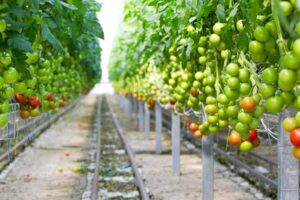

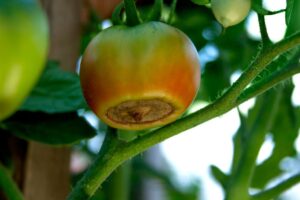

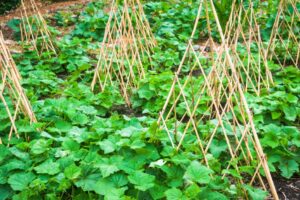


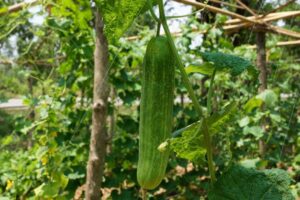
Leave a Reply